SOON, issue 16: Revising, Reading, Retreating
What the writing life has looked like the past many months.
Welcome to Something Out of Nothing, a newsletter about meaning—making it, finding it, offering it. I talk about the writing life, teaching, thrifting, books, travel, obsessions and idle interests, and much more.
Between all the other things I do, and all the things that I am, I am also a writer who is writing a book. For about six years I’ve been working on a short story collection—the long haul of writing a book can look and feel so different depending on the month, season, year (for you, your household, community, and world). Some people put their head down and work forward no matter what. I have been like this. I have also been very far from this. In the six years of writing this book, I’ve:
broken the weeks out into word counts
page counts
tried accountability partnerships
did Pomodoro method
hosted Zoom meetups
joined a co-working space
written in my car
recorded brainstorming voice memos while driving
written while my students are also writing
brought a notebook into bed and stayed up freewriting
gotten up before dawn to write at a coffee shop
written in a coffee shop right up until evening closing time
attended residencies, workshops, conferences, writing groups
pitched the collection to agents for practice & out of desperation (it wasn’t ready yet)
stopped working on it for long stretches
rented a cheap Airbnb and wrote until my brain ached behind my eyes
thought about it a lot
hardly thought about it at all
I’ve wondered how it is that I’m not done yet. Friends have wondered. I’ve been told: “Don’t obsess. Just finish.” Most of the time, I don’t really explain, rather I keep working, time passes, and I’m still not done but I’ve moved forward—sometimes, the goal line moves, too, but what can I do about that? I want the book to be the thing it’s becoming, not merely a finished thing. I love what the collection is becoming—more layered than its original ideas, that’s for sure—and the fact is, as writers our ideas often evolve faster than our skill set. I needed time to figure out how to do some of the things I knew (and didn’t always know) the stories needed.
Revising
Case in point: the very long anchor story in my collection (about 60-70 pages).
I taped the latest draft to the wall in my office at the Visual Arts Center of Richmond. I needed a large, visual representation of the story, because I have a non-chronological, secondary storyline that I want to weave around the chronological one. So I need to see the full 60-70 pages in front of me on the wall in order to conceptualize where these new pieces of story can associatively live with the primary narrative.
To experiment with association, I notated recurring themes and subjects and character behaviors in the primary storyline. Then I highlighted these recurrences in different colors to give myself even further visual distinction as I studied where to put the new material.
I have a stack of cut-up random excerpts for the secondary storyline, and I’ve started thumbtacking parts of it to the wall. This takes a lot of playing around, moving and moving back, considering the associative implications of placing X after Y, etcetera. This stack of random excerpts are also thematically catalogued, which helps me further think about placement.
The next step—after thumbtacking up all the additional material I have—is figuring out what story is still missing from this secondary storyline. And the step after that is freewriting about those missing parts, then placing those freewritten sections into the draft as well (as rough placeholders), after which I’ll insert all of these revisions and changes into a fresh digital draft. And I’ll print a new copy. I’ll likely let it sit for a couple of weeks before doing a complete read-through in one sitting to assess where I’ve arrived and where I want to go next. (This is not my usual revision process—do I have one?—but is particular to this story because of length and subject matter and the non-chronological element.)
Reading
Last year included a particularly solid streak of sharing my work in public—not something I’ve really done since grad school (nearly five years ago now). It felt so good to participate in community in that way again. Here I am in November, for example, reading at the Listening Room, a regular music and literature series here in Richmond (at Gallery5) where writers and performers share their work while backed by live ambient music.
It was surreal and gorgeous. The audience was full. I read the title story from my collection, Made to Feel, which felt wild to share so openly after keeping it so close.
And then in December, I read at the Visual Arts Center, where I’m the writer-in residence. It was the annual student reading, but they invited me to participate as well. I read the opening chunk of the longer (untitled) story that’s currently taped to my office wall.
Retreating
In October, I spent a quick forty-eight hours off in the mountains with other writing teachers from the Visual Arts Center. Quick as it was, I ended up revising seventeen pages of a different story that’s also been demanding considerable time to arrive where it’s going. We’re firmly in double-digit revision drafts at this point, and many people have read many versions. The subject matter is sensitive, so I’ve been navigating content and craft pretty equally as I work my way through it. All these drafts into it, and I’m still discovering what compels me about the characters and situation.
Then, just a couple of weeks before Christmas, I rented an Airbnb in southwestern Virginia with a couple of friends—Neta Harris and Ty Phelps. Two of us working on short stories, the other working on a novel. It was a reunion and a working retreat and an escape from our day jobs and the oncoming holidays and the defiant sense that the year could not end without at least one more attempt to make the work count.
We worked at the kitchen table together. We took a quickly abandoned hike up a steep and rocky trail. And though it was too cloudy for the meteor shower, we each read our work aloud around the fire pit. Neta read a full story rewrite she’d just finished, while I held my phone flashlight over her shoulder, and we moved as one to avoid the shifting bonfire smoke.
Private, wooded, comfortable, adorably decorated—here’s the spot we rented. Pretty inexpensive when split between three people.
Upcoming writing life stuff? Just the writing itself. Doing the work in those moments and ways that I can, along with everything else that needs considering and supporting. No readings or publications or retreats on the horizon. But, as writer-in-residence at the Visual Arts Center, I’m thinking about some community writing events open to everyone. I’ll keep you updated on those plans.


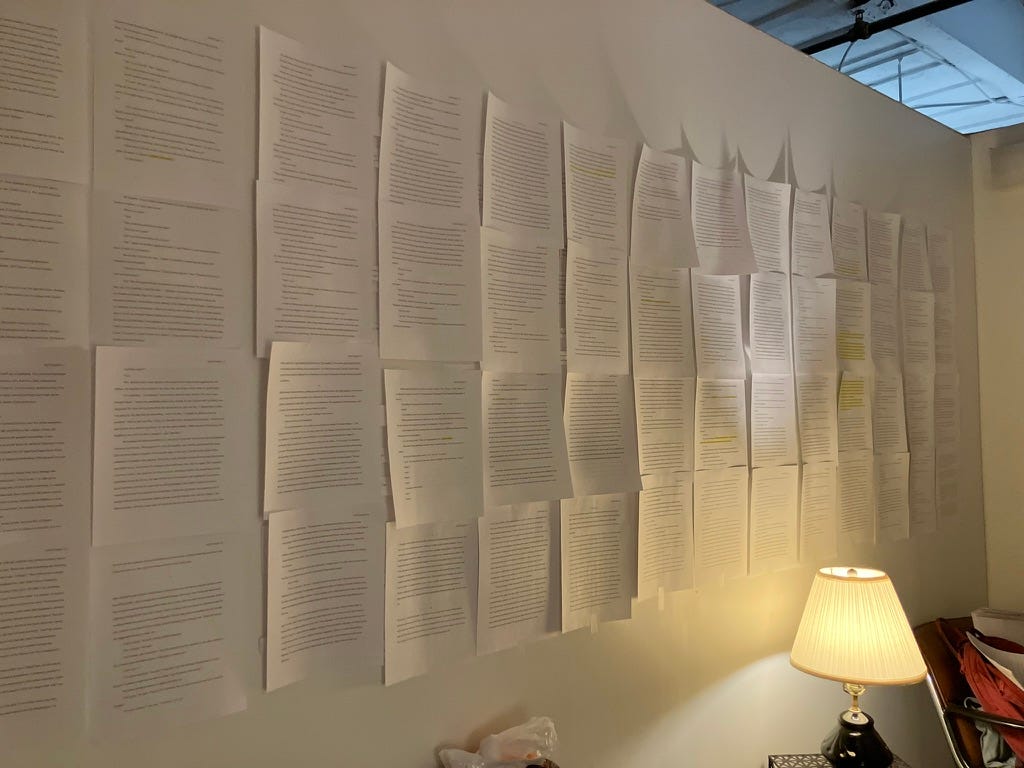
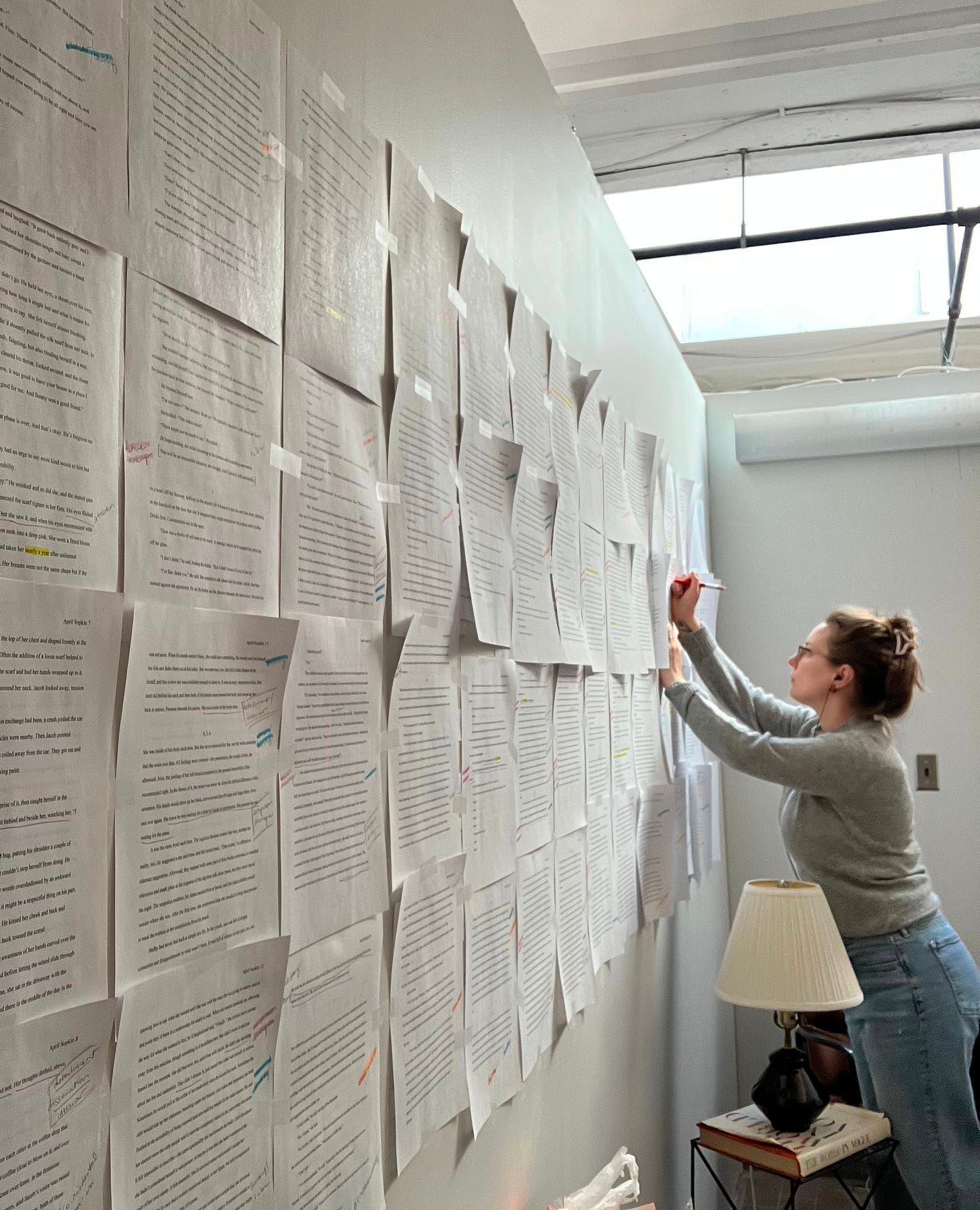
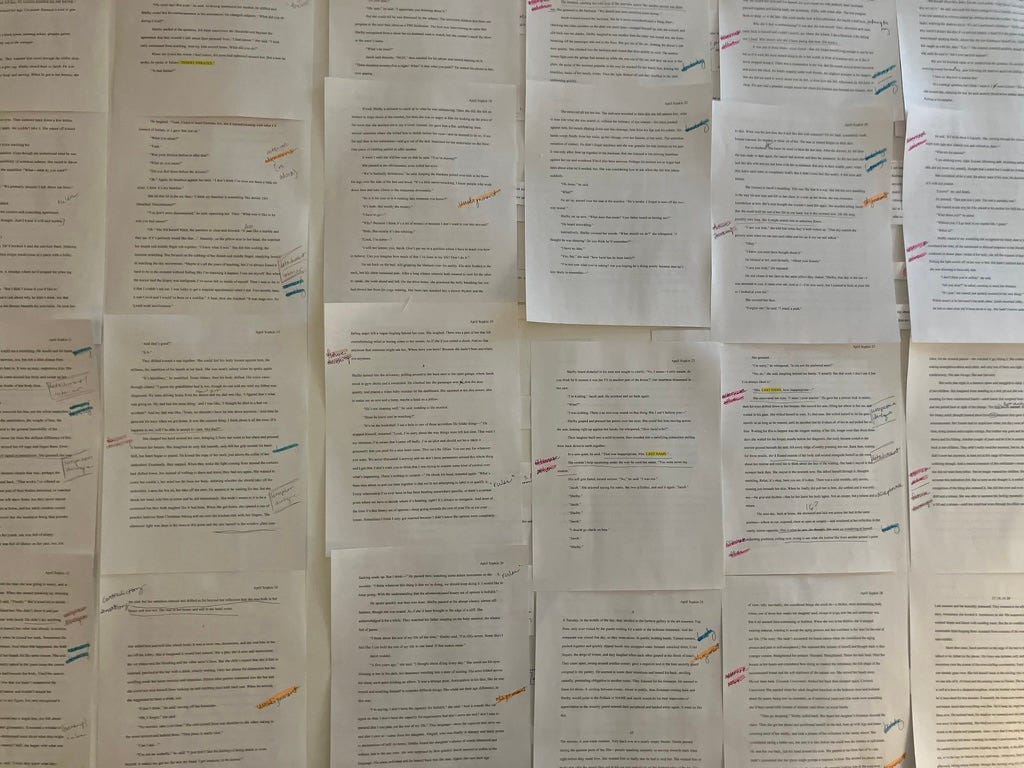

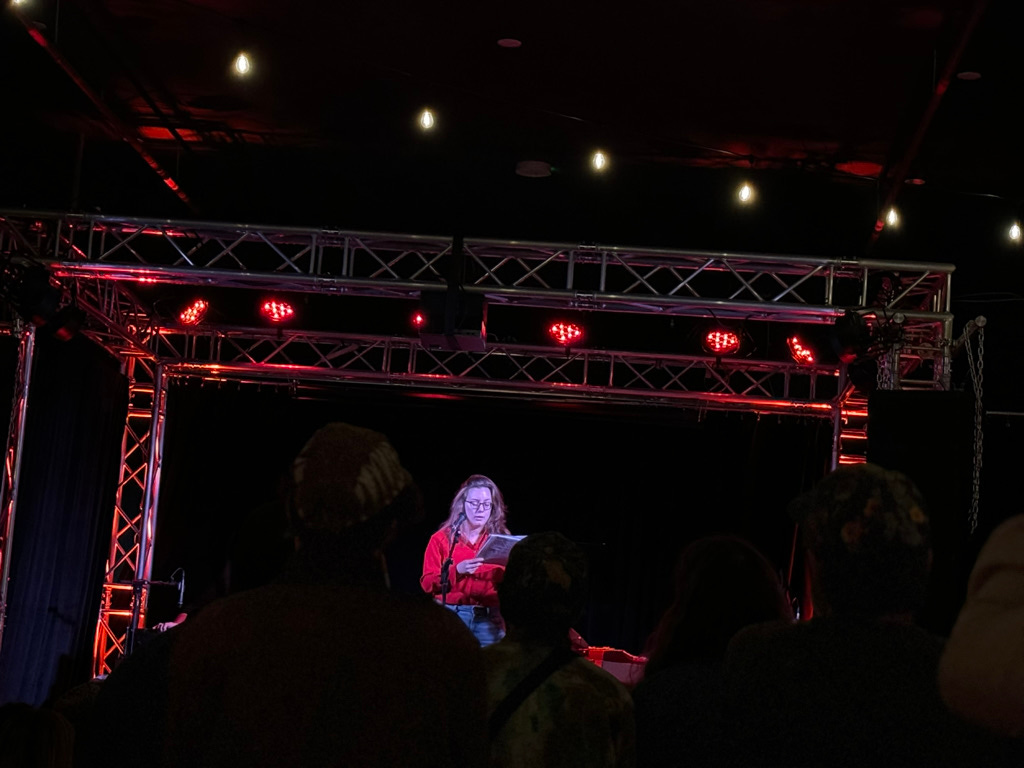
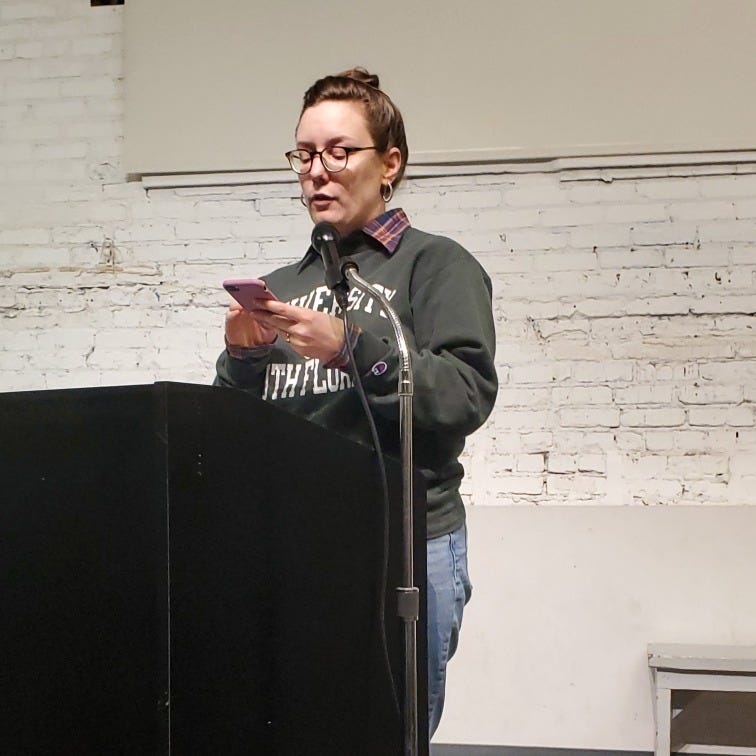
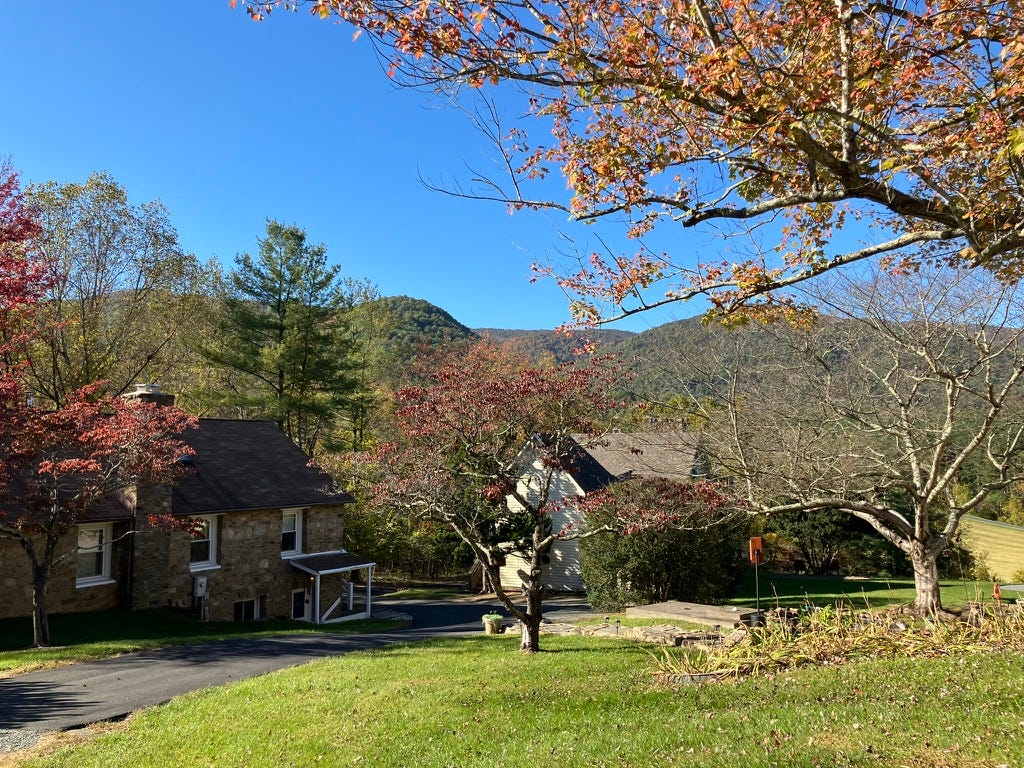
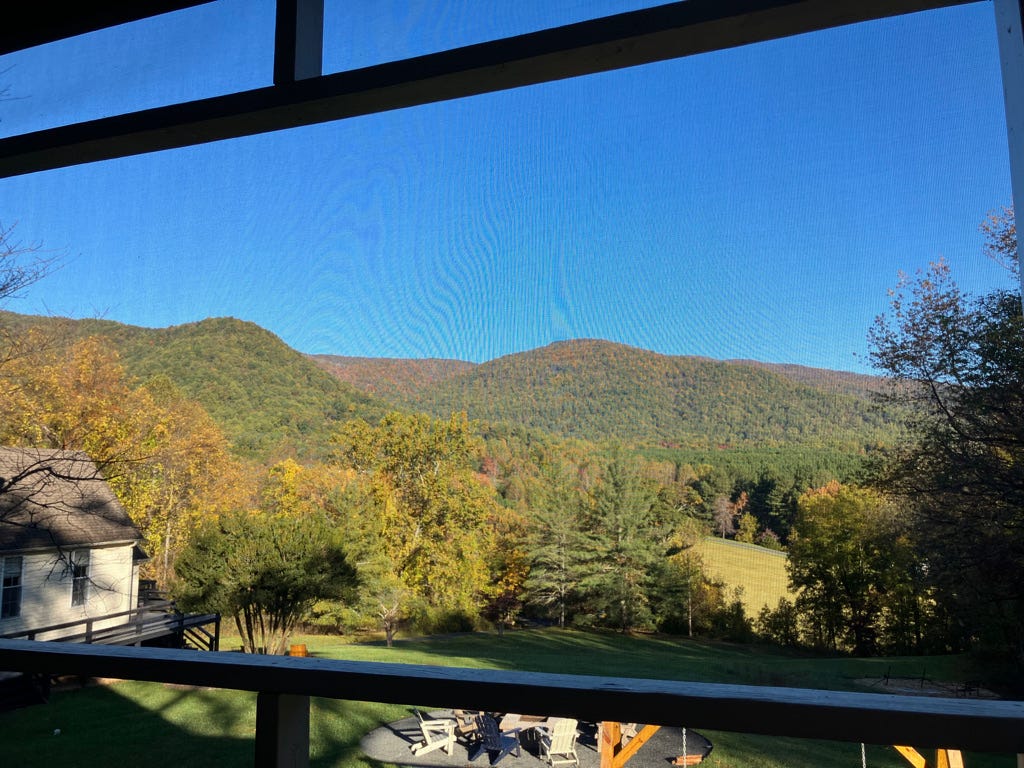
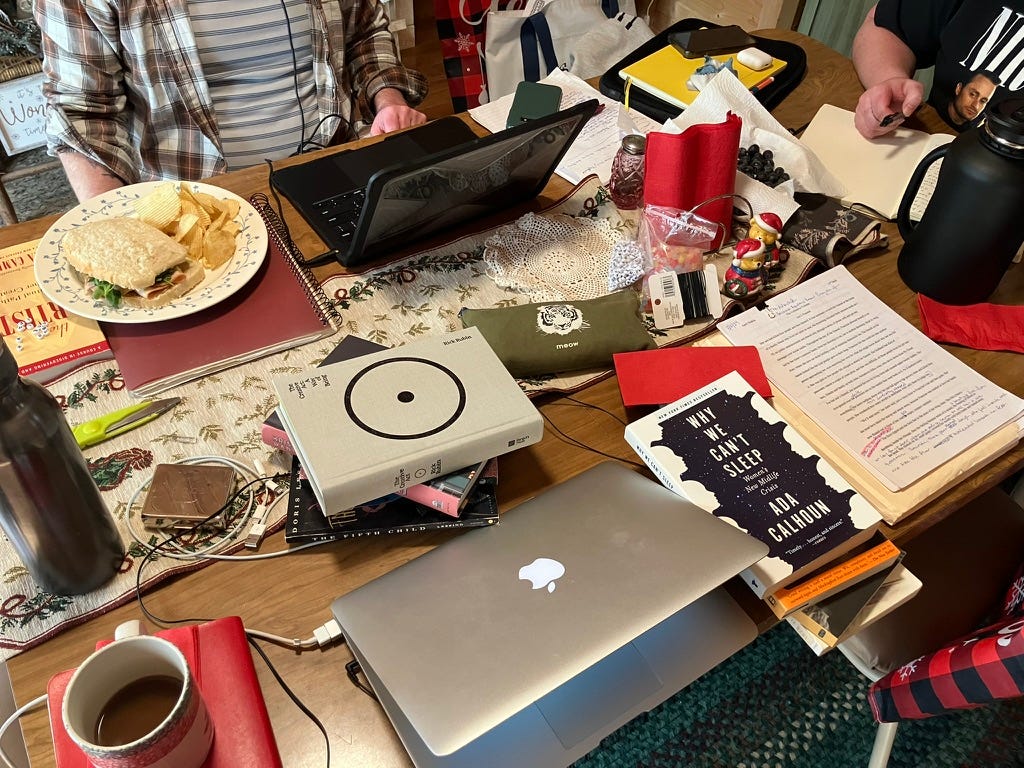
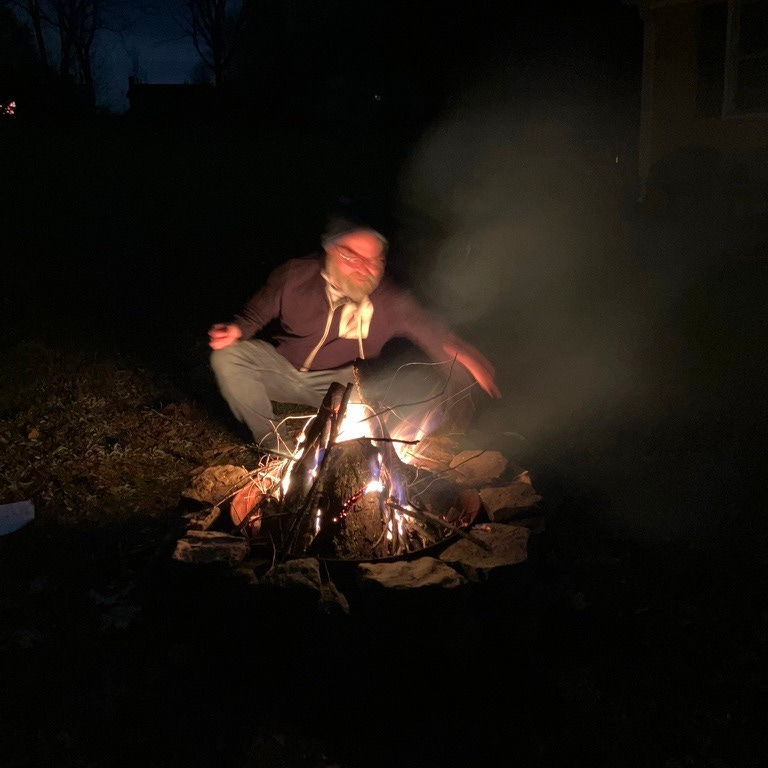
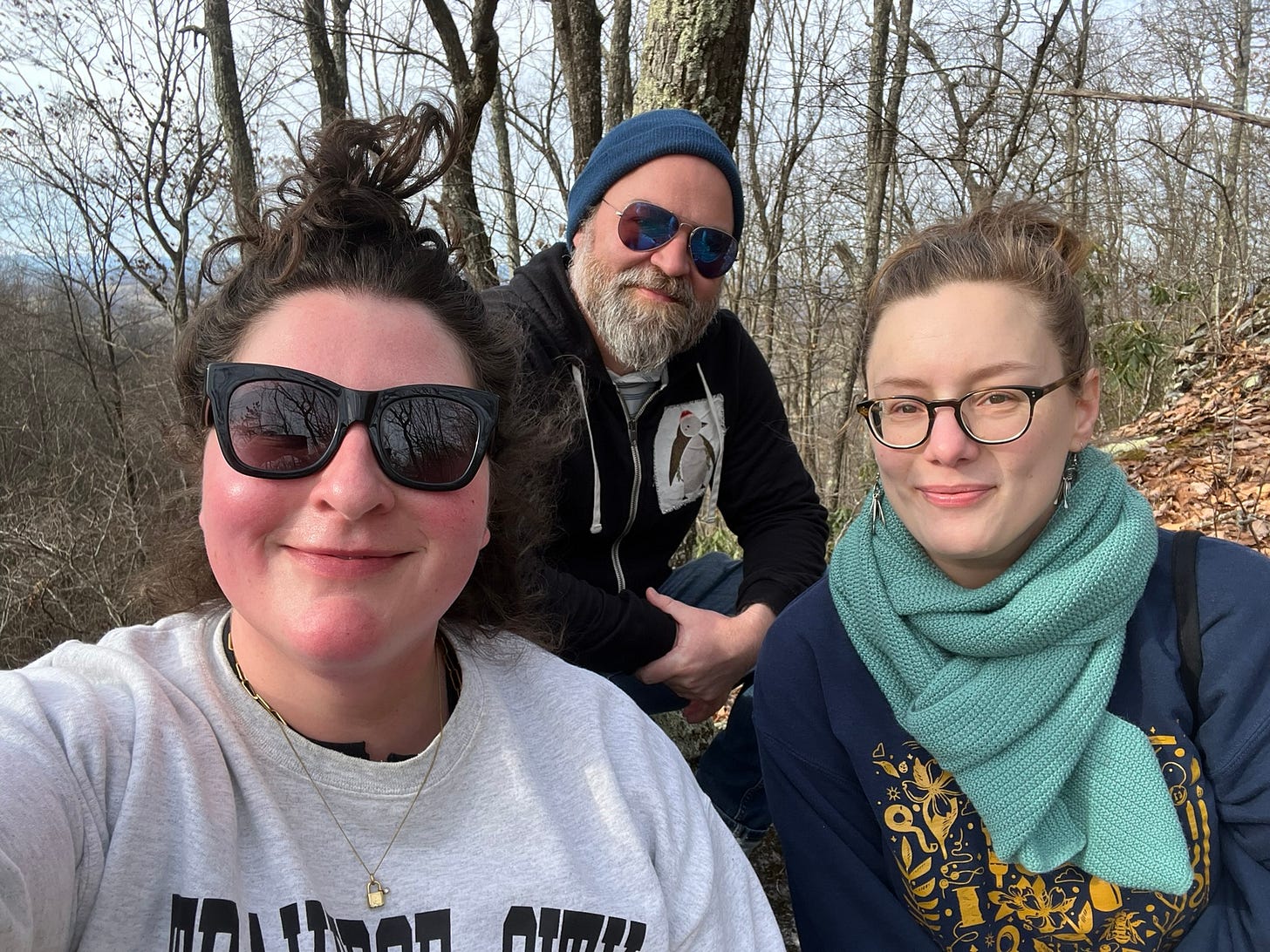
So important to see the work behind the finished products. I appreciate the photos of your story on the wall, quite literally, and look forward to reading your collection!
You are working so hard, April. The end is insight, I’m sure! Beth